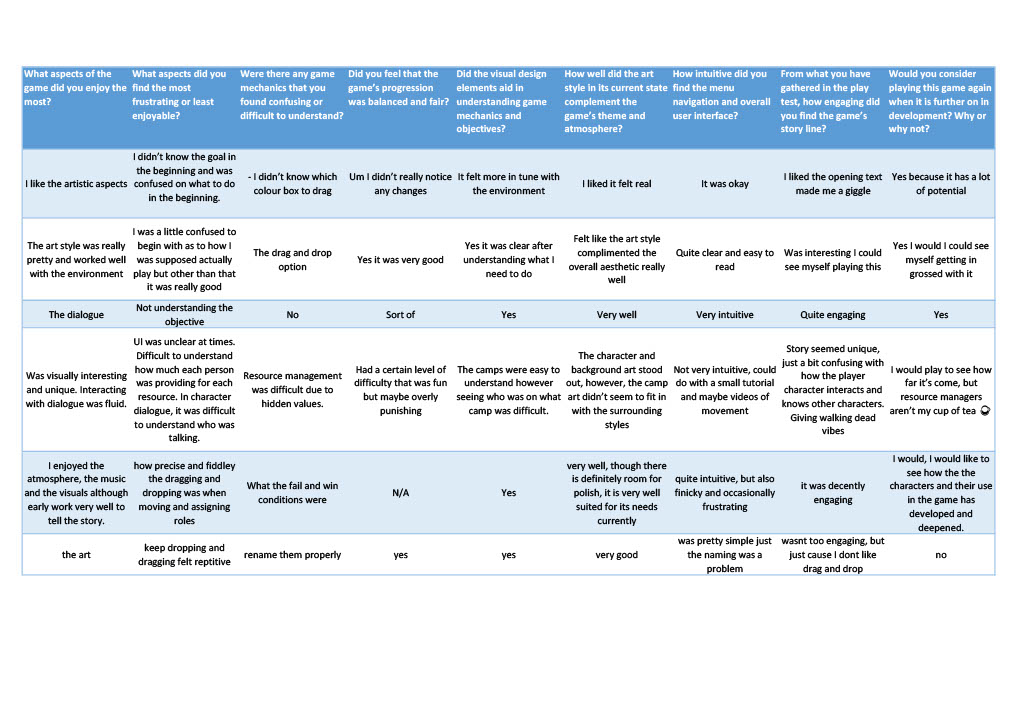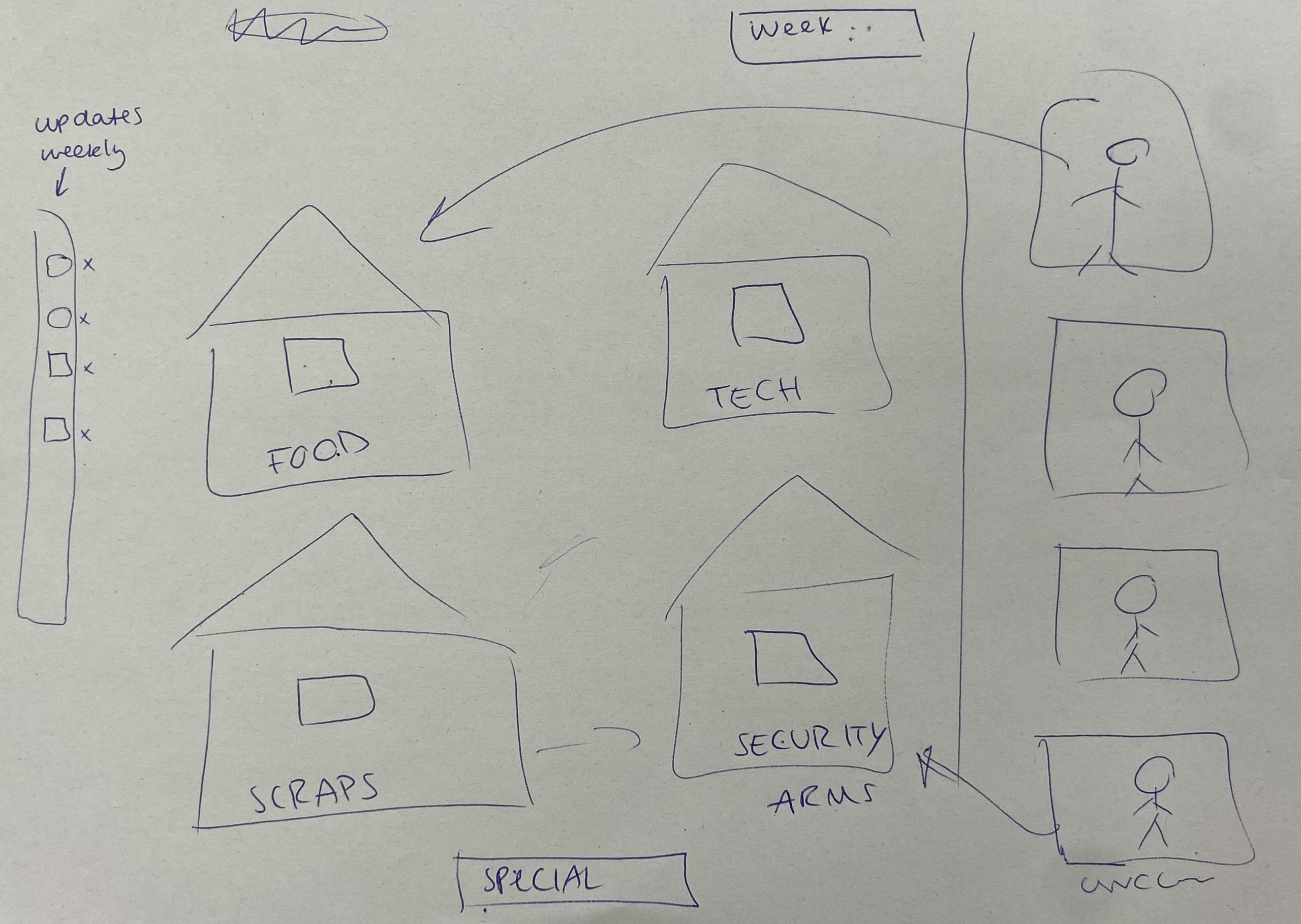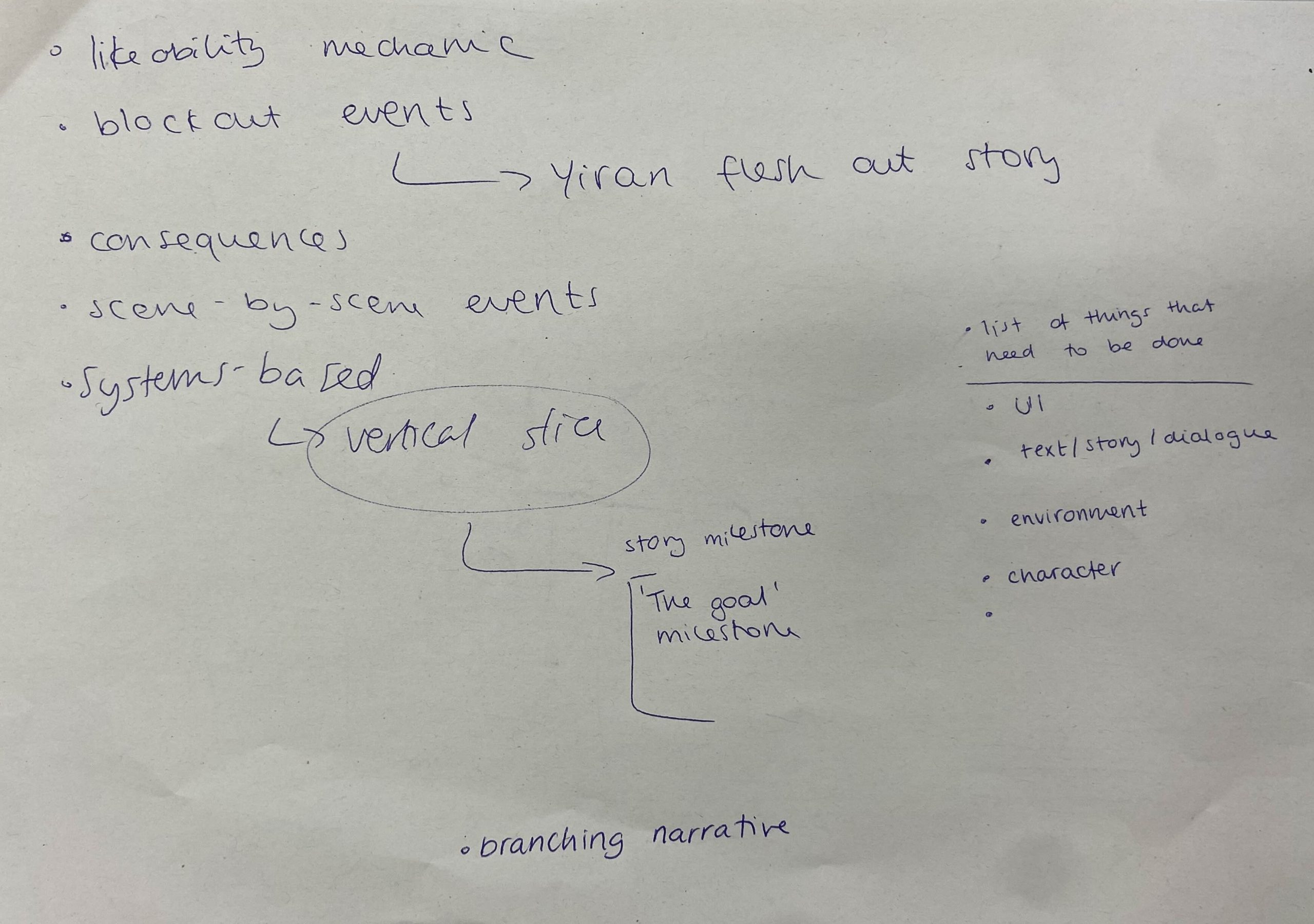In the morning we prepared for the playtest, I (Rosie) finished some extra details on the camp and helped Anna with implementing them into Unity. we prepared our bug report sheet and made a new survey to share with our play testers.
Bug report sheet:

All survey questions and results:

Notes taken during playtest:
| Playtester | notes | Time taken |
| Playtester 1 | – Did not understand the click to pick up click to drop mechanic – Never opened the weekly tasks – Needed instructions – Confusing which camps produce what – Failed day 5 twice (did not collect required resources) | 1min dialogue 7mins to stop playing |
| Playtester 2 | – Day 5 starved – Did really well – I could tell mostly which camp made what Didn’t take me long to figure out, with the tutorial it was just figuring it out myself – Enjoyed it | 44s dialogue 3mins40s to stop |
| maja | – I like the sound effects (mouse click) – “scratches my brain” – I think that this guy (arnold) produces arms I think – I’m gonna die soon (day 4) – Starved day 5 – It would be nice to see which camp is what so have a way to check it mid game | 33s Dialogue 48s tutorial 3min58s to stop |
| Playtester 4 | “I think I might starve” | 37s dialogue 42s tutorial 00 to stop |
We received some useful feedback during this playtest, but faced the bigger issue of realising that our game was extremely boring. Anna and Joe did some brainstorming to fix the gameplay loop and make gameplay feel more entertaining. They devised this new gameplay loop:

They decided to implement 3 new additions:
- Time control
- NPC tasks as progression drive
- Introduce camps as the player builds them
There was also a lot of feedback that players needed a reminder on which camp was which, but we decided this could be fixed with a UI pop up when clicking on the camp.
















